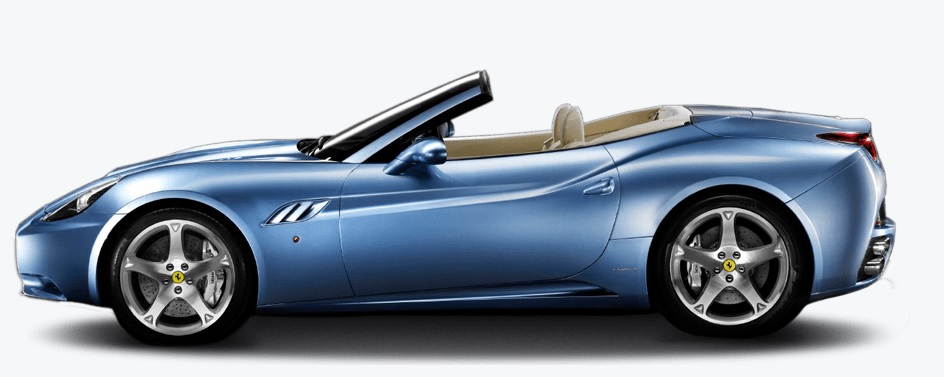

Convertible, 2 Doors, 4 Seats
10.5 l/100 km 22.4 US mpg
560 Hp @ 7500 rpm.
145.3 Hp/l
315 km/h 195.73 mph
3855 cm3
235.25 cu. in.
8, V-engine
Rear wheel drive,
4570 mm
179.92 in.
1910 mm
75.2 in.
1625 kg
3582.51 lbs.
| Brand | Ferrari |
|---|---|
| Model | California (Convertible) |
| Version | California T |
| Engine version | 3.9 V8 (560 Hp) |
| Year production start | 2014 |
| Year production end | 2017 |
| Vehicle type | Convertible |
| Horsepower RPM | 560 Hp @ 7500 rpm. |
| Acceleration 0 - 100 kmh sec | 3.6 sec |
| Curb weight kg -lbs total |
1625 kg3582.51 lbs. |
| Overall length mm - inch |
4570 mm179.92 in. |
| Doors | 2 |
| Top Speed | 315 km/h 195.73 mph |
| Designation model | F154BB |
|---|---|
| Engine position and orientation | Front, Longitudinal |
| Cylinders | 8 |
| Position of cylinders | V-engine |
| Displacement (liters) |
3855 cm3235.25 cu. in. |
| Eng. horsepower RPM | 560 Hp @ 7500 rpm. |
| Horsepower per litre | 145.3 Hp/l |
| Weight / horsepower kg/hp - hp/tons |
2.9 kg/Hp344.6 Hp/tonne |
| Weight / torque kg/Nm - Nm/tons | 2.2 kg/Nm, 464.6 Nm/tonne
2.2 kg/Nm464.6 Nm/tonne |
| Torque Nm RPM lb-ft RPM |
755 Nm @ 4750 rpm.556.86 lb.-ft. @ 4750 rpm. |
| Bore (mm in) |
86.5 mm3.41 in. |
| Stroke (mm in) |
82 mm3.23 in. |
| Compression ratio | 9.4 |
| Fuel delivery system | Direct injection |
| Fuel type | Petrol (Gasoline) |
| Valvetrain | 4 |
| Engine aspiration | Twin-Turbo, Intercooler |
| Engine oil liters | quarts |
13 l13.74 US qt | 11.44 UK qt |
| Engine coolant |
21 l22.19 US qt | 18.48 UK qt |
| Powertrain architecture | Internal Combustion engine |
| Engine location | Front, Longitudinal |
| Drive configuration | Rear wheel drive |
|---|
| Front brakes | Ventilated discs |
|---|---|
| Rear brakes | Ventilated discs |
| Anti-lock brake system | ABS (Anti-lock braking system) |
| Steering type | Steering rack and pinion |
|---|
| Front suspension | Double wishbone |
|---|---|
| Rear suspension | Multi-link independent |
| Wheels size | 245/40 ZR19; 285/40 ZR19; 245/35 ZR20; 285/35 ZR20 |
|---|---|
| Wheels rims | 19; 20 |
| Passengers seats | 4 |
|---|---|
| Trunk space min liter | cu. Ft. |
241 l8.51 cu. ft. |
| Trunk space max liter | cu. Ft. |
340 l12.01 cu. ft. |
| Overall length mm - inch |
4570 mm179.92 in. |
|---|---|
| Overall width mm -inch |
1910 mm75.2 in. |
| Overall height mm -inch |
1322 mm52.05 in. |
| Wheelbase mm - inch |
2670 mm105.12 in. |
| Track width front mm - inch |
1631 mm64.21 in. |
| Track width rear mm - inch |
1605 mm63.19 in. |
| Curb weight kg -lbs total |
1625 kg3582.51 lbs. |
|---|---|
| Fuel tank liters | gallons |
78 l20.61 US gal | 17.16 UK gal |
| Combined l/100 km - Mpg |
10.5 l/100 km22.4 US mpg |
|---|---|
| Autonomy km (combined use) | 780 |
8 CYLINDER V-Engine
https://www.thecarspec.net/components/engine/8-cylinders-v